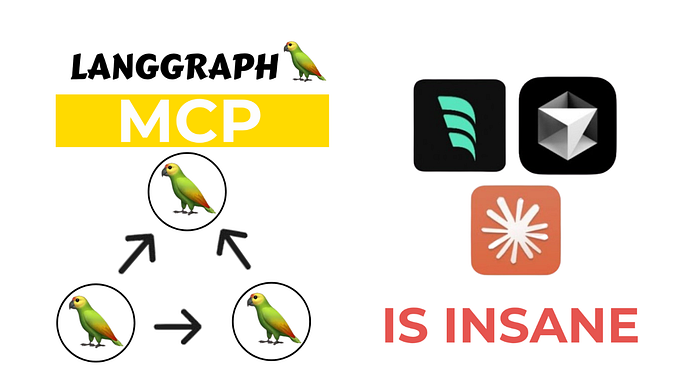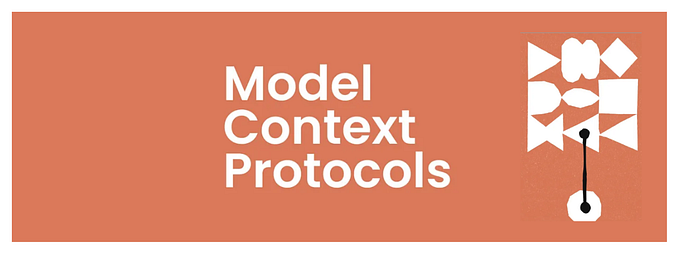Originally posted 29-Feb-24

Cindy Gordon is CEO and Founder of Saleschoice.com. She is a thought leader in disruptive innovation, Software as a Service (SaaS), Artificial Intelligence (AI), and advanced analytics. Cindy is the author of 14 books on SaaS, Big Data, Collaboration, AI, and other topics.
Her specialties include machine learning, natural language processing, predictive and prescriptive analytics, and data science. In the field of artificial intelligence, she focuses on ethical AI, AI governance, and AI for business.
Background

Education
- University of Toronto, Rotman School of Management — Doctorate, Network Complexity Science: Node Signal Detection/ Collective Intelligence Cultural Anthropology, 1996–2003
- University of Alberta — Master’s, Educational Administration in Information Technology, 1982–1984
Experience
- SalesChoice Inc. — CEO and Founder. 2012 — Present
- George Brown College — AI and Ethics — Adjunct Professor, 2021 — Present
- AI Directory — Co-Founder, Chairman, and Board Director, 2017–2023
- Helix Commerce — CEO and Founder, 2003–2012
- XDL Intervest — Partner, 2001–2003
- Accenture — Practice Partner Leader, 1998–2001
- Xerox Corporation
- General Manager & Senior Director, 1998–1999
- Director, 1991–1998
- Citicorp — Assistant Vice President, 1989–1991
Profiles
Books
The AI Dilemma: A Leadership Guide to Assess Enterprise AI Maturity & Explore AI’s Impact in Your Industry with Malay A. Upadhyay

Winning at Collaboration Commerce: The Next Competitive Advantage with Hedi Collins and José Cláudio Cyrineu Terra

Why Buy the Cow? How the On-Demand Revolution Powers the New Knowledge Economy edited with Subrah S. Iyar

Business Goes Virtual: Realizing the Value of Collaboration, Social and Virtual Strategies with JoAnn and John Girard

Social Roots: Why Social Innovations are Creating the Influence Economy with John Girard and Andrew Weir

Realizing the Promise of Corporate Portals: Leveraging Knowledge for Business Success with José Cláudio Cyrineu Terra

Knowledge Management: Classic and Contemporary Works edited by Daryl Morey, Mark Maybury, and Bhavani Thuraisingham — Chapter 5: Knowledge Sharing Is a Human Behavior with Ben Torrey and Bill Ives

Content
Podcasts
Videos
Presentations
KMWorld
- 2011 C301: Business Goes Virtual — Slides
- 2010
- 2009
- W6: Developing Enterprise 2.0 for Employee and Customer Engagement — Slides
- A105: The Future Knowledge Workforce — Slides
- 2008
- W10: Virtual World Safari: Showcasing Practical Solutions
- W20: SharePoint & KM
- A106: Virtual Worlds & Next-Generation Social Net Experiences
- 2007
Articles
Knowledge Sharing as an Enabler of Virtual Business with John and JoAnn Girard
Why is collaboration important?
Collaboration is the act of people working together to reach a common goal. It also involves getting the right information to the right people at the right time to make the right decision. This sounds so simple-but collaboration is so much more than well-informed and speedy decisions to help organizations get work done.
Collaboration is the fundamental DNA or essence in the way that people in an organization function together to achieve a mutually desired outcome. This chapter defines collaboration and provides leading practices to demonstrate the value of collaboration in supporting an organization’s growth. Collaboration, value networks, social networks, and open-source innovation (often called crowdsourcing) approaches to business virtualization are top of mind with global leaders who understand that a new world order is rapidly evolving.
This new collaborative and more connected world is more adaptive, more agile, more fluid, more virtual, and finally, more collaborative and quite frankly more refreshing, fun, and inspiring. Just look at the energy of Gen X and Y in how they approach their day-to-day work practices. This precious energy needs to be harnessed to unleash further our human potential and also prepare for the Generation Virtual growing up with 3D virtual avatars and animated worlds to make way for the entertainment social experiences overlaying all business processes. Just think of how much more enjoyable working in an SAP order entry system would be if the employees were connected to each other and be able to enjoy peer-to-peer problem solving support creating conversations in real time.
There is no question that collaborative business models are reaching deep into business model design logic and challenging our assumptions related to governance, strategy, organizational design, leadership, people practices, process, culture (core values and rituals), technology, and our performance measurement systems.
In order to understand the significance of collaboration, it is helpful to go back to the beginning. The first generation of business collaboration tools began with a focus on documents that were created and shared by individuals who used one device: primarily the personal computer. Information resided safely within the walls of the enterprise, and personal productivity over time improved. Collaboration shifted the focus from documents and personal computers to a more mobile and virtual model where people collaborated in social web-based sessions, defining the new fundamental unit of collaborative work, in which groups of individuals interact across company and geographic boundaries.
The goal of virtual collaboration is to create the experience of presence with the absence of being face to face, hence creating a virtualized experience. This new collaborative experience helps us cope with information overload by delivering only what we need, just when we need it. We can find experts in an instant and participate in social online conversation, using diverse social and virtual toolkits from a variety of devices, like blogs, videos, wikis, social networks, team spaces, and conferences. Fortunately, due to advanced security and policy management, we can also engage diverse stakeholders, including partners, customers, and suppliers in our one-to-many communications. Collaborative conversations on the web form a new fundamental unit of collaborative work. The goal of a virtual collaborative conversation is to create the effect of presence within the absence of face-to-face (live) connections.
As suggested in Winning at Collaboration Commerce: The Next Competitive Advantage, it was very clear that collaboration is a participatory process leveraging social capital know-how that is also built upon strong cultural value foundations based on trust, reciprocity, networks, and risk-taking models. With global market dynamics stressing customer solutions that are real-time, agile, adaptive, and Internet accessible, the customer experience value chain is under a collaborative design rethink. Already attracting, developing and retaining Gen X and Gen Y talent pools is a challenge; creating virtual businesses is a key success factor to drive a sustaining growth future.
For the first time in the history of academics and business leaders at the top of their game, we are seeing more aligned wisdom that collaboration is a fundamentally higher order of leading, thinking, and behaving; it is challenging old rigid views as we emerge to a more human organizational experience leveraging networked, virtual, social collaboration, and modernized design experiences that connect the mind, heart, and spirit to achieve higher productivity performance levels.
Effective collaboration can improve many aspects of an organization’s performance, whether it is an increase in innovation capacity, increased time to market by streamlining the product-development process, taking time out of the sales cycle, or reducing customer wait time in call centers, using instant messaging (IM) to find the person who can respond to an opportunity immediately, or avoiding travel costs due to unified and ubiquitous telepresence capabilities, there is sufficient evidence that hardwiring your organization to achieve collaboration and virtualization practices is critical for long-term growth and survivability.
When you implement more efficient processes, achieve faster time to market, and reduce cycle times, you extract more value from your collaboration investment. If you can identify opportunities to shorten the time needed to make critical decisions, there is no better place to invest than in smarter, more collaborative, and more virtualized capabilities.
These good points all aside, the practical reality is that many executives still say, we get that this collaboration stuff is important, but how do we infuse it in our day-to-day management and operational practices, so it really sticks? In other words, where is the evidence that investing in collaborative practices and next generation technology solutions really makes a difference to the bottom line?
Perhaps the measure of success is recognizing that we are human beings, and once our basic needs for safety and shelter are satisfied, humans thrive on having a sense of belonging. They develop a sense of connectedness and knowing their ideas are valued and respected. They are motivated to achieve higher levels of productivity, and hence they are more open to collaborating and working together to develop and deliver stronger products and services to their customers or stakeholders.
Knowledge Management and Value of Social Technologies
Knowledge Management is a management discipline that continues to evolve in theory and practice.
In simple terms, KM is best defined as the body of understanding and skills that is mentally constructed by people. Knowledge is increased through interaction with information (typically generated from other people).
There are typically three major types of knowledge:
- Embodied or tacit or implicit knowledge: Undocumented information in human beings such as intuition, empathy, experience know-how, mental models, artifacts, values, and norms that enables us to make decisions.
- Represented knowledge, often called explicit or codified, or tangible knowledge: This is knowledge that is mostly contained in data, and documented information that is rightly the basis for such decision-making.
- Embedded knowledge: is the knowledge that exists in processes, products, rules and procedures — also called explicit, or codified or tangible knowledge.
While the term knowledge management is popular, there are many interpretations and more importantly — many misunderstandings of what KM means. KM is not the mechanical organization of knowledge; nor is KM solely about content. KM is a system and a process, and not just about content. It is also about culture as culture creates the context for knowledge to effectively be cultivated and to flow effectively.
I look at KM as a multi-disciplinary approach to achieving an organization’s objectives, by making the best use of knowledge — it focuses on processes such as acquiring, creating, and sharing knowledge, and the cultural and technical foundations that support them. The aim of KM is to align knowledge processes with organizational objectives.
The reasons why organizations commit to KM include:
- Improve the quality of available knowledge within the enterprise and share it across operating units
- Improve responses to competitive forces
- Reduce or control costs
- Accelerate the rates of innovation within an enterprise
- Reduce the loss of intellectual assets caused by turnover in employees
The value that social technologies provide to KM programs is that they create an enabling collaborating infrastructure to help people, communities and social networks to adaptively generate knowledge in real time.
These adaptive free-flowing toolkits allow people to self-declare their interests and for the natural organic process of interest swarming to take place. In other words, people gravitate to the topics, themes, discussions of most interest to them, as well as being able to search for profiles, or interest areas that specifically map to an individuals’ interest. Social technologies provide for a more open, transparent, and organic form of communication which accelerates organizations’ ability to support and further achieve the KM organizational goals summarized above.
Sometimes I hear people say knowledge management is dead — which only reaffirms how misinformed people are in understanding the science of knowledge diffusion theory, which is rooted in cultural anthropology and deeply looks at how knowledge is formed and flows.
Knowledge is what allows us to innovate and grow, and without its capabilities and generative power — we would not evolve as a human species. Social technologies are simply toolkits that accelerate our ability to share knowledge and create communities of interest relevant to our goals, and needs.
Perspectives on Trust Making for Leadership Growth
Charles Darwin had a good perspective on life when he wrote “ It is not the strongest of the species that survive, nor the most intelligent, but the one most responsive to change.”
However, what he failed to put in perspective is that to adapt to change and build this type of resilience capability requires organizations to face new and unexpected challenges by developing skills in the art of trust making.
In today’s market, the economic realities to many of our clients, friends, and colleagues seem daunting. What we do know is that organizations will always have a choice.
They can either respond proactively and efficiently or choose to remain in the status quo mode which is often characterized by a downward spiral. Doing the same with less is usually a pathway that leads to mediocrity and certainly does not lead to innovation success.
What motivates people to change? What motivates leaders to lead and mentor? Why is trust making often so elusive? Why are business graduates not trained in trust and creating a culture of openness, transparency and candor?
We cannot expect people to follow in difficult times, unless leaders learn how to communicate authentically and honestly, and create organizations where this is the norm. I recently had an experience in my own firm, where a trusted partnering relationship was brought into our core operation, leveraged our credentials, and good will and relationships to secure business independently. The stress that dishonest people can drive into a business’s operations was very evident, as the disappointment created such a sense of disillusionment as we experienced what dishonesty and lack of integrity emits into the human psyche — especially when core values are impacted.
What do you do in a situation like this? In our case, it was simple, the core values have to take precedence when ethical behaviors are in question and rapidly discontinue the relationship.
Unfortunately, the yardstick that too often measures the performance of CEOs is their ability to create wealth and shareholder value for their investors.
However, the realities of short-term thinking in the latest rounds of busts have many business strategists and thought leaders — advising there is a better way.
Our belief at Helix and our research in creating stronger collaboration centric cultures is that to develop stronger corporate cultures where trust is a core value, means that leaders need to start practicing authentically trust making and trust sensing behaviors.
- Rule One — Simply always tell the truth. Don’t develop weak behaviors by falling into the trap of telling people what they want to hear. Treat your colleagues as adults. Speaking straight talk is a key leadership foundation for developing trust in an organization’s culture. Soon others will follow. People appreciate knowing they can trust their superiors and know that they have their interests genuinely at heart.
- Rule Two — Encourage others to speak honestly, and openly, irrespective of how difficult it is to speak the truth. It is often very difficult for others lower in the hierarchy to share bad news when they know their superiors want to hear good news. It is important as a leader to create the conditions for people to know they are respected for having courage and know that taking risks are encouraged and supported.
- Rule Three — Reward the change agents that are contrarians or challenge the status quo. Organizations do not innovate successfully if they fail to seed change agents that are catalysts for new ways of working and thinking. Ensure they are positioned so they can enable change vs spin their wheels and not be listened to — and leave disillusioned. Remember to recognize them in small ways — the simple thank-you’s one can never say enough of especially in difficult times.
- Rule Four — Diversify knowledge sources. It is important to reach into the organizational structure at all levels to hear firsthand what is on the minds of employees, customers, suppliers, and competitors so your own leadership understanding has the rich context. It is also important that people believe they are being listened to and heard, these footprints will be shared and also enhance your leadership credibility. Creating a culture of trust requires developing a strong listening culture and appreciated diversity in its richest context: gender, culture, thoughts, etc.
- Rule Five — Acknowledge mistakes and move on. Don’t bury mistakes, use them as learning opportunities. This gives everyone permission to do the same and sends out signals that risk taking is really accepted. Clearly if mistakes are risks to the business and impact core values the actions taken need to be carefully thought through and advisors and peers /superiors/mentors can play an important reflection opportunity to ensure a culture fostering learning is sustainable.
- Rule Six — Develop a culture where collaboration and knowledge sharing is free flowing. Most organizations like to hoard information as information and knowledge means power. Work hard to develop open environments to source rich knowledge, at the same time protecting the knowledge that requires more risk management. Financial reporting requires a stricter risk management process than, for example, access to project plans from diverse projects to develop stronger project management skills.
- Rule Seven — Develop clear value statements for transparency, trust, collaboration, and authenticity. Many executives use these words freely, but few have explicit leadership behaviors and learning programs to support employees. Hire people because they create a culture of trust making behaviors and are known for their honesty, integrity, and candor.
- Rule eight — Weed out the behaviors irrespective of level that are not aligned to the core values. People do not suffer fools gladly — they can easily spot inconsistent leadership behaviors and when business judgements are clearly at risk, having a truthful conversation and making tough decisions that demonstrate you are serious about respecting and living your organization’s core values will go a long way to building a stronger culture of trust making strength.
In my experience in business, it takes time to build trust and develop consistent leadership behaviors that support the continual flow of intelligence that enables true collaboration.
Perhaps the only messenger one should ever shoot is the one that arrived too late to tell the truth.








